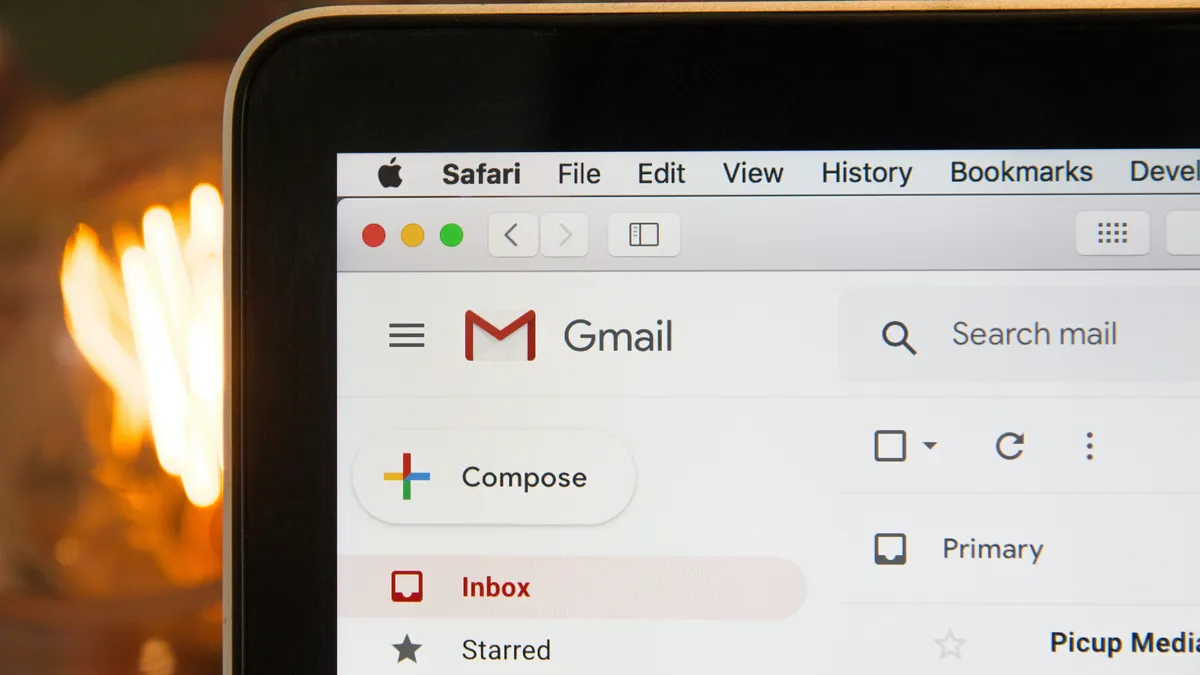Email marketing remains one of the most reliable channels for growth. In this article, we’ll break down 25 must-know terms every marketer should understand to maximise results in 2025.


Email marketing has been one of the most reliable channels for driving sales, conversions, and brand growth for as long as most of us can remember. In 2025, email marketing plays an essential role in any successful marketing strategy. Whether you’re in ecommerce, offering professional services, or working in the B2B space, email marketing consistently delivers the kind of ROI other strategies can only dream about.
If you’re part of an email marketing agency, running your own business, or working in-house with a marketing team, understanding the key industry terms is the first step to building email marketing strategies that actually make an impact. It’s what helps you plan smarter campaigns, communicate clearly with clients, and ultimately get the results you’re aiming for.
This guide will walk you through 25 must-know email marketing terms. Whether you’re sending emails for a living or just trying not to annoy your customers, we’ll break each one down with examples, insights, and practical advice, showing how these terms tie into everything from copywriting and design to automation, content marketing, reporting, and overall business performance. By the end, you’ll be clued-up on the lingo and ready to put it all to work to drive real results.
Also known as split testing, A/B testing is a way to compare two versions of an email campaign to see which one drives better performance. Marketers might test subject lines, email templates, content design, or calls-to-action to understand what resonates best with their target audience.
Example: A fashion ecommerce brand runs two email campaigns; one with a discount headline and one with a free-shipping offer, to see which generates more conversions and revenue.
AMP (Accelerated Mobile Pages) for email allows brands to include interactive elements directly in their emails, such as product carousels, booking forms, and live polls. This improves the customer experience by reducing friction and encouraging immediate action.
Why it matters: It’s a powerful way to stand out in the inbox and deliver unique experiences without sending customers to another channel.
Behavioural emails (often referred to as Flows in Klaviyo) are triggered by customer actions (or lack of actions). They are a key part of personalised marketing strategies and can include automations like abandoned cart reminders, welcome series, or re-engagement campaigns.
Our insight: Email marketing agencies often combine behavioural data from tools like Klaviyo with advanced segmentation to maximise ROI.
This is just the percentage of emails that don’t reach your subscribers’ inboxes. High bounce rates aren’t what we want, so agencies and marketing teams usually focus on keeping lists clean and double-checking data to make sure campaigns actually land where they’re meant to.
This is the part of your email copy that nudges readers to take the next step, whether that’s “shop now,” “read more,” or “book a consultation.” A strong CTA can seriously boost conversions and help businesses hit their campaign goals.
Our advice: Just don’t overdo it. People hate feeling sold to. Keep it natural, clear, and a little intriguing, so readers actually want to click.
A key performance metric showing the percentage of people who clicked on links in your email. CTR helps marketers assess the effectiveness of their content, design, and messaging strategies.
Our advice: Don’t obsess over CTR alone. Yes, it’s a helpful signal, but what really matters is whether those clicks turn into meaningful actions, like purchases or sign-ups.
This is the percentage of subscribers who actually take the action you want after opening your email, like making a purchase in ecommerce or booking a consultation for service businesses. This is where the real win is. Don't get us wrong, clicks are nice, but conversions are what actually drive revenue.
A security measure that helps email providers verify the authenticity of your emails. Businesses that neglect DKIM risk damaging their brand reputation and seeing lower inbox placement.
An advanced authentication protocol that works with SPF and DKIM to prevent phishing. For brands and agencies, having DMARC in place is an important trust signal to customers.
A process where subscribers confirm their sign-up via a follow-up email before being added to your list. This ensures your email marketing services are targeting a high-quality audience, improving campaign performance and compliance.
A series of automated emails sent over time to nurture leads or guide customers through a process. Drip campaigns are common in both ecommerce and B2B strategies, helping brands stay top-of-mind without overwhelming subscribers.
Dynamic content lets you tailor emails based on who’s receiving them. In Klaviyo, for example, ecommerce brands can use it to show personalised product recommendations, recently viewed items, or targeted messages, without creating separate emails for each segment.
A great example is an abandoned cart email. Instead of a generic reminder, dynamic blocks can pull in the exact product a customer left in their cart, complete with the image, name, price, and even colour or size. It’s more relevant, more helpful, and far more likely to convert.
Dynamic content can also be used to:
It’s automation and personalisation in one, and a proven way to increase conversions.
The measure of how successfully your emails reach inboxes rather than spam folders. Deliverability is affected by list quality, sender reputation, and technical setup. An email marketing company will often include deliverability analysis in their services.
This is all about splitting your email list into smaller groups based on things like location, purchase history, or how engaged they are. Doing this makes your campaigns more relevant, which not only keeps bounce rates down but also gets you better results overall.
The platform used to create, send, and track your emails, examples include HubSpot, Mailchimp, and Klaviyo. Choosing the right ESP can make or break your email marketing strategy, and any good email marketing company will help offer support and advice on what ESP is best for your business and situation.
A measure of how subscribers interact with your emails, opens, clicks, forwards, and replies. Higher engagement improves deliverability and overall marketing ROI.
This means regularly getting rid of inactive or invalid subscribers from your list. It keeps your campaigns performing well, saves you money, and is something any good email marketing agency will always keep on top of.
The percentage of subscribers who open your email. While changes in privacy features mean open rates are less accurate than before, they can still offer useful insights when paired with other reporting metrics.
Customising email content based on subscriber data, names, purchase history, location, or preferences. When businesses get this right, it not only builds better relationships with customers but also drives more conversions.
This is all about designing email templates that look great and work properly on any device. With most people checking emails on their phones, it’s non-negotiable. Nothing’s more frustrating than opening an email and seeing buttons half off the screen or content you can’t interact with. It ruins the experience, annoys your customers, and you can wave goodbye to any chances of getting clicks.
This is the ultimate measure of success in marketing. Put simply, it’s how much revenue your campaigns bring in compared to what you spend. Email marketing consistently delivers some of the highest ROI of any channel because it’s direct, personal, and highly targeted, meaning you’re reaching the right people at the right time without wasting money on broad advertising. It's no wonder why it’s such a long-standing favourite.
This is a record that tells email servers which domains are allowed to send emails on behalf of your company. Think of it as a VIP list for your senders, if an email comes from someone not on the list, it’s more likely to get flagged as spam. SPF works hand-in-hand with DKIM and DMARC to protect your brand’s reputation, improve deliverability, and make sure your emails actually land in your subscribers’ inboxes instead of getting lost or blocked.
A person who has opted in to receive your emails. Growing a subscriber list is essential, but focusing on quality over quantity leads to better results.
Your email’s first impression, and a major factor in whether subscribers open it. Agencies often use A/B testing and copywriting expertise to craft subject lines that stand out.
A “What You See Is What You Get” editor lets marketers design emails visually without coding. This makes it easier for businesses of all sizes to produce professional, on-brand designs.
Knowing these terms is one thing, using them effectively is another. A strong email marketing strategy blends creative copywriting, data-driven insights, and proven techniques to meet business goals. Whether you’re a small business owner running your own email campaigns or working with one of the top email marketing companies, the process should include:
Email marketing is one of the most direct ways to talk to your customers, and when used strategically, it can deliver the kind of ROI that marketers dream about. It also plays nicely with other marketing channels like PPC, SEO, content marketing, and social media marketing, so you can create campaigns that actually feel cohesive across the board.
If your business wants to see the full potential of email, working with experts who have real industry-specific expertise can make a huge difference. Many email marketing agencies offer consultation, design, automation setup, and reporting services tailored to businesses across a variety of industries, from ecommerce brands and B2B companies to service-led businesses.
The big thing to remember about email marketing in 2025 is that it’s both an art and a science. Get a handle on the terms, understand the strategies behind them, and you’ll be able to deliver campaigns that look great and actually drive results, boost revenue, and strengthen your brand’s relationship with its audience. Get in touch with our expert team today.




Our mission at Frosted is to turn one-time buyers into lifelong customers. Retention is at the heart of sustainable growth. We help brands build lasting relationships, maximize revenue, and reduce reliance on paid ads – because keeping customers should be just as important as acquiring them.
Frosted Limited,
157 Compton Street,
Manchester,
M34 5DH